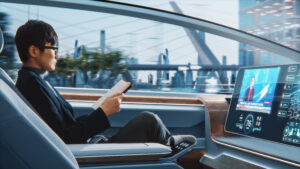
According to a recent survey by the Insurance Institute for Highway Safety, drivers prefer some automation that is accompanied by sufficient safety measures. According to Alexandra Mueller, the principal designer of the study, “Automakers frequently believe that drivers want as much technology as they can obtain in their vehicles.” However, very few research have looked at real customer perceptions of partial driving automation.
The lane centering, automated lane change, and driver monitoring were the three features that were the subject of the IIHS researchers’ nationwide study of more than 1,000 drivers. Keep reading to learn more and then contact Law Offices of Fernando D. Vargas at 909-982-0707 if you have been injured in a car accident and require a free legal consultation.
Current partial automation systems
The majority of partial automation systems are made to help with driving on highways. While adaptive cruise control controls the car’s speed and separation from vehicles in front, lane centering continuously modifies the steering to keep the vehicle in the center of the travel lane. Some systems can also automatically change lanes, allowing the car to do it without the driver having to steer.
Many very common scenarios are still inaccessible to partial automation. Systems must therefore keep an eye on the driver to make sure they are still prepared to act if something goes wrong. For this, most vehicles either use driver-facing cameras or steering-wheel sensors.
Consumers want semi-autonomy – not full autonomy
Consumer interest in these technologies is high, according to the IIHS poll, but drivers appear to choose partially automated systems that need their continued attention while driving, according to Mueller.
For instance, automated lane change and lane centering are available in “hands-on” and “hands-free” variations, the latter of which mandates that the driver’s hands remain on the steering wheel at all times. The hands-on version of the features was preferred by more drivers.
Similar to automated lane changing, some versions allow the driver more control than others. Motorist-initiated versions require the driver to actively initiate each lane change. Car-initiated versions do not need the driver to do anything to start the maneuver; the vehicle software decides when to start lane changes on its own. The majority of drivers preferred that the feature be started by the driver.
There is also a lot of support for driver monitoring
The survey also revealed a high degree of support for various forms of driver monitoring, a crucial element of the safety ratings IIHS is creating for systems with partial automation. A majority of drivers said they would feel at ease with all three driver-monitoring strategies covered in the survey, including sensors on the steering wheel, a camera tracking what the driver is doing with their hands, and a camera pointed at their face tracking where they are looking, regardless of whether the feature in question allowed hands-free operation or required the driver’s hands to stay on the wheel.
According to Mueller, “the drivers who were most at ease with all sorts of driver monitoring tended to claim they would feel safer knowing the vehicle was watching them to make sure they were utilizing the technology properly.” That implies that explaining the safety justification for monitoring could help allay consumers’ worries about their privacy or other issues.
Many motorists concurred that hands-free lane centering would increase anxiety while driving compared to hands-on. Of all the methods of driver monitoring, those who stated they would still prefer hands-free lane centering were the most acceptable. The hands-free option, according to several of these drivers, would increase comfort and safety while driving. Some of them, however, also voiced a desire to abuse the technology, claiming that hands-free lane centering would increase their ability to multitask while driving. Such responses highlight how customers’ perceptions of the boundaries of partial automation are hazy.
Comparatively to those who favored hands-free, those who preferred hands-on lane centering appeared to be more passionate about it. Fewer than half of drivers who wished to utilize the function indicated they would purchase a vehicle with hands-free lane centering, while about two-thirds of those who preferred hands-on lane centering or had no choice which type they used stated the same. A car featuring either a hands-on or hands-free version of the feature would be purchased by more than three-quarters of drivers who favored hands-free lane centering.
If price were not a factor, more than half of the drivers polled said they would be at least somewhat likely to buy a car with autonomous lane shifting. Most people who indicated a preference for either driver-initiated or vehicle-initiated automated lane changing—including many who favored hands-free lane centering—said they would desire a hands-on version.




